- Submissions

Full Text
Examines in Marine Biology & Oceanography
The Double Face of Posidonia Oceanica Coin and the Beached Remains in the Circeo Man and Biosphere Reserve and in the Aegadian Island MPA: From Uncomfortable Waste to Valuable Resource
Martina Gaglioti*
Marine Biologist, GIS Analyst, Freelance Researcher, Italy
*Corresponding author: Martina Gaglioti, Marine Biologist, GIS Analyst, Freelance Researcher, Italy
Submission: September 09, 2023;Published: October 13, 2023

ISSN 2578-031X Volume6 Issue3
Introduction
Posidonia oceanica is the most representative seagrass of the Mediterranean Sea and according to the IUCN methods is classified among the least concerned species [1]. Even if is not mentioned amongst the properly defined “charismatic species”, considering its dual role as seascape modelling species and functional ecosystem engineer its preservation is essential. Sandy beaches, together with the foredune and the dune, form a morphological, functional and ecological complex (Figure 1). This complex provides ecosystem services which have by far the highest value in the coastal areas [2,3] even though the general perception of these poorly attractive habitats to a not expert eye is similar to that of “ecological deserts”. However, beside their ecological relevance, there are several threats undermining this delicate balance. The trend of the transversal profile of a beach is due to the processes acting perpendicularly to the shoreline and can generally be divided into three different units: the emerged beach or backshore (Figure 1), the intertidal beach or foreshore (Figure 2) and the submerged beach shoreface (Figure 3) (Lucarini et al. 2007) [1]. The coastal erosion issue is among the most concerning phenomena undermining the natural equilibria and the proper management of beached Posidonia remains is closely related to this urgent need, worth to be considered from policy makers as confirmed also by the main international and national policy guidelines [4]. Due to the lack of a unique management strategy of beached Posidonia banquettes at a local scale level the authorities adopted several temporary management strategies and emergency solutions trying to cope with this issue. To date the banquette-related residues are considered as special wastes from the national jurisdiction with all the implications related to its disposal.
Figure 1:The coastal dune system and the foreshore how currently appear in the coastal area of Torre Paola (Latium Coast) Ph. M. Gaglioti 02.04.2021.
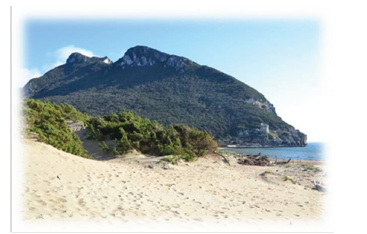
Figure 2:The backshore from a seaward perspective Ph. M. Gaglioti (02.04.2021).
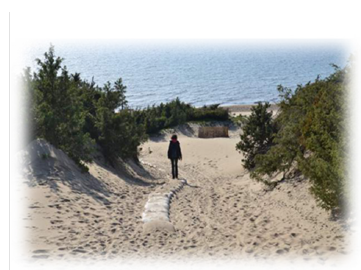
Figure 3:A view on the shoreface Ph. M. Gaglioti 02.04.2021.
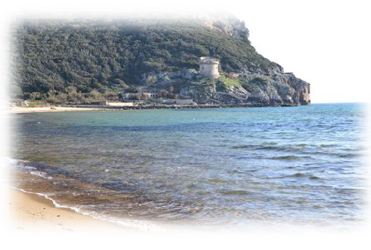
At a local-scale the main challenge for management solutions is considering both environmental protection and economic-tourist aspects. The most frequent interventions provide for expensive nourishment interventions [5] which are useful in a very short-term schedule but their mild effectiveness in the medium and long term is confirmed by the common need of several interventions close together in an ever-shorter time span. Both due to the ecological significance and the direct influence on the functional aspects and the sustainability of the adopted practices, for instance the landfill disposal strategy or the mechanical removal of accumulated residues can negatively influence the overall sediment balance of the natural beach ecosystems. The Latium coastline has an extension of 361,5km and it includes 24 municipalities belonging to 3 provinces: Viterbo, Roma and Latina. From grey literature and data obtained from local stakeholders’ declarations emerged a marginal role of banquette in this coastal region, comparing it with other peninsular littoral areas. Even though there are some knowledge gaps about these aspects in this coastal area, since only 9 municipality returned properly filled forms and most of them are focused on irrelevant beaches from an aesthetic value perspective. Indeed, few of them are interested by occasional stranding phenomena (Figures 4-6) without an extensive formation of P. oceanica banquettes but from the ecological point of view we know that beautiful is not always synonymous of useful. A sectorial legislation continues to be lacking at a national scale level and considering the wide plethora of proposals, to date the Latium region is the unique context where a more structured management plan has been accomplished [6].
Figure 4&5:Figure 4 (left side) and Figure 5 (right side) Posidonia banquette in a coastal area of the Circeo Man and Biosphere Reserve- Torre Paola (Sabaudia municipality) (02.04.2021).
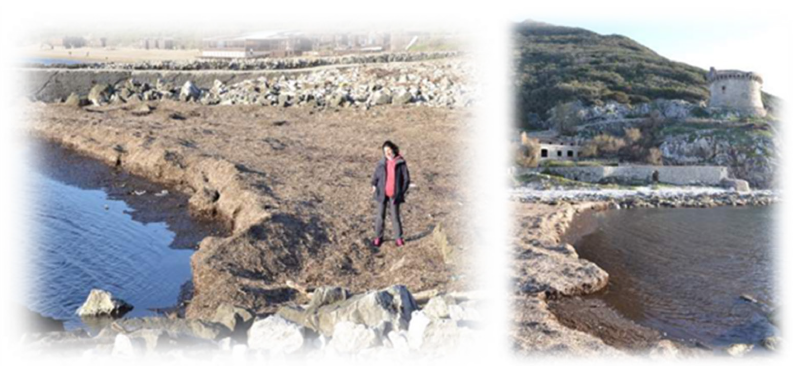
Figure 6:A banquette formation observed after some seasonal storm surges at Capo Portiere (Latina municipality) Photo credits: Martina Gaglioti.
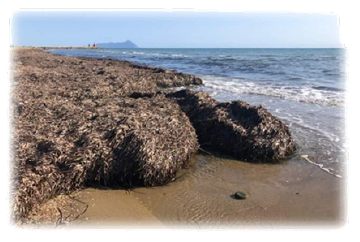
Mostly, the biodiversity management is accomplished through a sectorial approach even though the ecosystems are taxonomical and functionally complex units and in this perspective an ecosystembased management would be desirable to overcome cognitive bias associated to these short-sighted initiatives. The erosional process is an emblematic phenomenon that testifies how important this change of perspective can be, considering the Posidonia ecological function during the whole plant life-cycle. In addition, as well recognized at National level the only marine SCI are defined exactly where the presence of Posidonia meadows has been ascertained. This is a hint suggesting the ecological relevance of this species during its whole life-cycle.
Posidonia oceanica banquettes, beside their important ecological function for the nutrient cycling [7], have a pivotal role in the sedimentary dynamics enhancing the positive balance associated to their sediment retainment ability and the dumping effect toward the incident waves undermining the coastline preservation dynamics reducing the erosional processes widely documented worldwide. The seagrass-related mechanical action can actively influence the sedimentary balance of a beach because allows the retainment of a large amount of sediment inside them and dampens the energy of the incident wave, protecting the coast from erosion. From a policy perspective a circular of the Italian Ministry of Environment (n. 8123/2006) suggested three adaptative management strategies of beached biomasses taking into account the territorial needs and the local contexts characteristics. Social ecological-system based approach would be the most desirable attitude to translate and put into practice some magic words almost abused even in terms of scientific literature and general reference guidelines. For sure, they are important and essential for a general approach but each context at local scale has its dynamics worth to be considered before each kind of intervention at a small or medium spatial scale. Taking into account that as much as possible it would be desirable to leave the banquettes in the beaching locations allowing to the vegetal detritus to complete its life cycle and accomplish its ecological functions till the end, perhaps, the most sustainable solution can leaves before their translocation and the consequent installation of Posidonia filled pillows in the most attractive coves of the island (Caletta Bianca- Calamoni, Favignana Island Aegadian Islands MPA). Photo credits: Clelia De Simone be retrieved considering the social-ecological system as a whole rather than considering the issue only on a purely absolutistic sense. Several proposals on partial exploitation for commercial use of beached detritus have been defined both in protected areas and in other littoral zones and the success of this approach is documented from a quite good level of acceptance also from the tourism sector [8-10].
Communication and an awareness rising strategy primarily aimed at the policy makers even before the seasonal users of the beach is essential. For instance, promoting manual removal and selective cleaning actions could be an approach, beside some nature-based solutions based on historical baseline and relying on some plan of intervention aimed at the restoration of degraded habitats such as seagrass meadows giving an higher contribution from a functional perspective rather than concerning only about the aesthetic value associated to an easier re-obtaining of a wider and more usable coast. A sort of ecological beach approach has been already tested in several Mediterranean areas, for instance in 2016 and 2017 in the Aegadian Islands Marine Protected Area with the help of some young volunteers (Figures 7 & 8) beside the manual removal of waste fraction from the natural remains and a subsequent translocation of a portion of the beached Posidonia from the most popular beaches of Favignana Island, a pilot project realized in collaboration with ENEA and Sapienza University proposed the use of a portion of banquette for some pillow filling and the creation of “sustainable” furnishings for a better tourist use of the beach, meeting both the request of a certain target of users and the needs more properly related to the conservation priorities [6]. In this perspective at the end of the season the temporarily removed material was then put back in place, completing the natural debris cycle without landfilling-related costs and in any case satisfying the tourist needs introducing also a curious novelty for the bathing season.
Figure 7:Preliminary cleaning activity of the beached dead leaves before their translocation and the consequent installation of Posidonia filled pillows in the most attractive coves of the island (Caletta Bianca- Calamoni, Favignana Island Aegadian Islands MPA). Photo credits: Clelia De Simone.
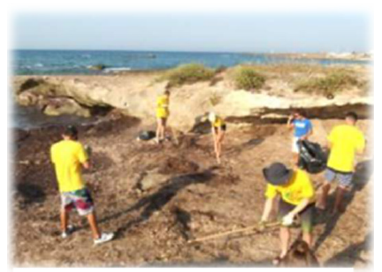
Figure 8:Debris removal from the banquette formations in the Bay of Marasolo during an outreach activity aimed at young volunteers (Favignana Island, Aegadian Islands Marine Protected Area). Photo credits: Martina Gaglioti.
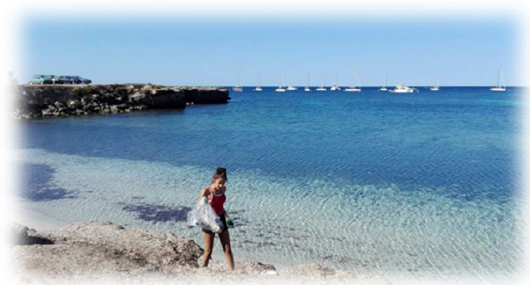
References
- Bovina G, Sinapi L (2009) Outlines of coastal geomorphology. The restoration of marine-coastal eco-systems and the defense of sandy coasts in protected areas, Reports 100/09, ISPRA, pp. 57-74.
- Boudouresque CF, Ponel P, Astruch P, Barcelo A, Blanfuné A, et al. (2017) The high heritage value of the Mediterranean sandy beaches, with a particular focus on the Posidonia oceanica "banquettes": A review. Sci Rep Port-Cross natl. Park 31: 23-70.
- Audisio P, Muscio G, Pignatti S, Solari M (2002) Dunes and submissive beaches - environment between land and sea, ministry of the environment and of the whole territory - Priulian museum of natural history. Municipality of Udine, Quaderni Habitat, Italy, 4: 160.
- RAC/SPA - UNEP/MAP (2014) Monitoring protocol for Posidonia oceanica Guala I, Nikolic V, Ivesa L, Carlo G, Rajkovic Z, (Eds.), RAC/SPA – Med MPAnet Project, pp. 1-43.
- Nicoletti L, Paganelli D, Gabellini M (2006) Environmental aspects of relict sand dredging for beach nourishment: Proposal for a monitoring protocol. ICRAM Notebook 5: 159.
- Scarpato A, Borrello P, Chiesa S, Devoti S, Magaletti E, et al. (2020) The ecological beach: Sustainable management of the Posidonia oceanica banquette on the beaches of Lazio shorelines. Italian Institute for Environmental Protection and Research, pp. 1-54.
- Mateo MA, Sanchezlizaso JL, Romero J (2003) Posidonia oceanica “banquettes”: A pre-liminary assessment of the relevance for meadow carbon and nutrients budget. Estuarine Coastal and Shelf Science 56(1): 85-90.
- Boudouresque CF, Astruch P, Bănaru D, Blanchot J, Blanfuné A, et al. (2020) The management of mediterranean coastal habitats: A plea for a socio-ecosystem-based approach. Evolution of Marine Coastal Ecosystems under the Pressure of Global Changes. Springer Publishers, USA, pp. 297-320.
- ISPRA (2010) Formation and management of Posidonia oceanica banquettes on the beaches. ISPRA Manuals and Guidelines: 55/2010, Italy, pp. 1-124.
- Ostrom E (2009) A general framework for analyzing sustainability of social-ecological systems. Science 325(5939): 419-422.
© 2023 Martina Gaglioti. This is an open access article distributed under the terms of the Creative Commons Attribution License , which permits unrestricted use, distribution, and build upon your work non-commercially.
 a Creative Commons Attribution 4.0 International License. Based on a work at www.crimsonpublishers.com.
Best viewed in
a Creative Commons Attribution 4.0 International License. Based on a work at www.crimsonpublishers.com.
Best viewed in 







.jpg)






























 Editorial Board Registrations
Editorial Board Registrations Submit your Article
Submit your Article Refer a Friend
Refer a Friend Advertise With Us
Advertise With Us
.jpg)






.jpg)














.bmp)
.jpg)
.png)
.jpg)










.jpg)






.png)

.png)



.png)






